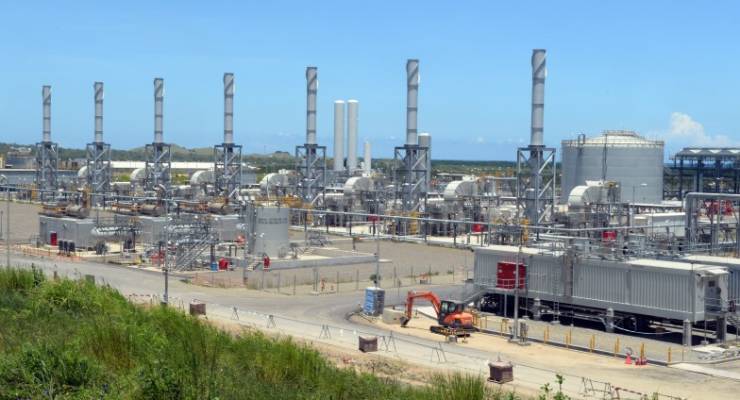
The government’s new emissions road map is built on a lot of assumptions. Scott Morrison and Angus Taylor have woven a narrative about gas and “emerging technologies” that allows them to avoid talking about renewables.
But underlying this narrative are a whole lot of claims experts say come dangerously close to misinformation.
“[Morrison] is using language very carefully in ways that if you pull it apart it is technically correct but creates a misleading impression,” the Grattan Institute’s Tony Wood says.
“He just doesn’t give you the whole story. He gives you the part of the story he wants to present. It’s careful political positioning.”
Crikey has picked apart the government’s main talking points to come up with some areas where the narrative could come unravelled.
Carbon capture and storage (CCS) is viable
Frank Jotzo, director of the Centre for Climate and Energy Policy at ANU, said although CCS technically works, the idea of it having widespread applications is a furphy.
“There are very few applications for CSS around the world,” he says. “In the very large majority of cases, CCS presents a huge additional cost.
“We would not see widespread adoption of CCS in the power industry. That ship has sailed … Instead, the role for CCS would be for quite specialised applications, potentially cement production, fertiliser production.”
Gas will reduce emissions
Morrison has declared reducing emissions should be the goal and it doesn’t matter how we get there. He’s shifted the conversation away from renewables to “low emissions”, allowing him to focus on gas — a fossil fuel — as a transitional energy source.
While experts say it’s true gas will play a role in the transition away from fossil fuels, the idea that we need more gas is not.
“The role of gas will be important but it’s not the main story,” Wood says. “Gas is a fossil fuel and what we shouldn’t be doing is investing in more fossil-fuel infrastructure.”
Jotzo said the government’s gas claims were deliberately misleading.
“What’s true is that gas has a role in transition to renewable energy,” he says. “We’re using a lot of gas in industry — that’s not going to go away overnight.
“What’s wrong is to assert that there is a growing role in gas. In the shift to a clean energy system, gas will retain some sort of role in the gradual transition, but that is a diminishing role not an increasing role.
“There’s really no need to expand the gas production system.”
Jotzo said the claim gas could lead to a recovery or a jobs boom was “simply nonsense”.
“There are almost no jobs in [gas] … If we were going to see a massive boom in gas-based manufacturing, we should be seeing it right now. And we’re not seeing it.”
Solar and wind can ‘stand on their own two feet’
Morrison claims solar and wind are well established, commercially viable and have scale, and therefore can operate without much further government assistance.
They do not feature in Taylor’s five “priority technology” areas.
But Tom Swann, a senior researcher at The Australia Institute, said renewable energy needs government support to speed up the transition to lower emissions.
“Renewables investment has collapsed, again, due to policy chaos,” he says.
“The solution the government is proposing is actively creating the problem, by actively intervening to get in the way of the transition, instead of speeding it up.”
Jotzo agrees: “We need to look at what might hold up that transition to renewables. The investment case for many of these projects is increasingly shaky. What we need is ultimately a broad-based incentive for the uptake of [renewables].”
We need to focus on ‘new technology’
The word technology is again front and centre of the government’s energy plan.
Jotzo says this is misleading: “The problematic bit is the word ‘new’. There are no new technologies that need to be developed to be decarbonised. The road map to decarbonisation is really clear and can be done on existing technologies.”
Swann said using the word technology shifted the messaging away from government action.
“[A] technology-driven approach was the Howard government’s excuse for having no policy,” he says. “It didn’t work and was called out as an international embarrassment.”








I hope I live long enough to see the authors of the coalition sabotage of climate and energy policy held to account for their criminal culpability in the destruction of our natural environment and the massive losses – including lives resulting from their behaviour.
All this semantic analysis of #ScottyFromMarketing’s ‘messaging’ is fascinating. But is has a simpler and ,ore accurate name: Corruption.
Thanks BA…I’ve been reading the articles and comments here, and that word ‘corruption’, along with marketing bulls+it, keeps raising its ugly head throughout!!
Promises of carbon capture (CC) and sequestration (S) rely on us failing to grasp the overwhelmingly large volume of our emissions. If someone says they have found somewhere to permanently sequester CO2, then they are dealing with a negligibly small fraction of it. Regardless, no matter where they put it, they are still putting oxidised carbon into our environment. Do not give airtime to claims of CCS.
Don’t you just love “gas-led recovery”. What a load of old cobblers that is. Gas provides very little employment and is expensive so this is not a “recovery”. If they are talking about recovery of the atmosphere they are still talking tripe. We are currently breathing in a number of London smogs over our lifetimes and gas is going to make no improvement.
Another stunning example of President Morrison’s capacity to focus exclusively on short-term politics at the expense of long-term strategic policy. It would be amusing, were it not a disgrace, that only a short time ago, Labor was being roundly condemned because it was not overtly committing to a 2030 climate target – this captured the attention of the media for days if I remember correctly. Here is the Morrison government doing much the same except worse and thus far, without any appreciable consequence – and 2GB, Sky and the Murdoch media won’t be highlighting the flaws, omissions and lies in this latest President Morrison “marketing strategy”. The energy platform starts with an abject lie – that under the LNP there have been significant gains in emission reductions. Apparently, under President Morrison, we can continue to burn more fossil fuel AND reduce carbon emissions. To think, all we had to do to solve our climate issues was vote Morrison in years ago. This article highlights the obvious flaws in the newest non-strategy , but for the LNP it is the perfect platform insofar as it is like a Pauline Hanson opinion. Enough truth to make it all sound plausible, but those supporters who want to believe just fill in the credibility gaps for themselves to get to the opinion they want.